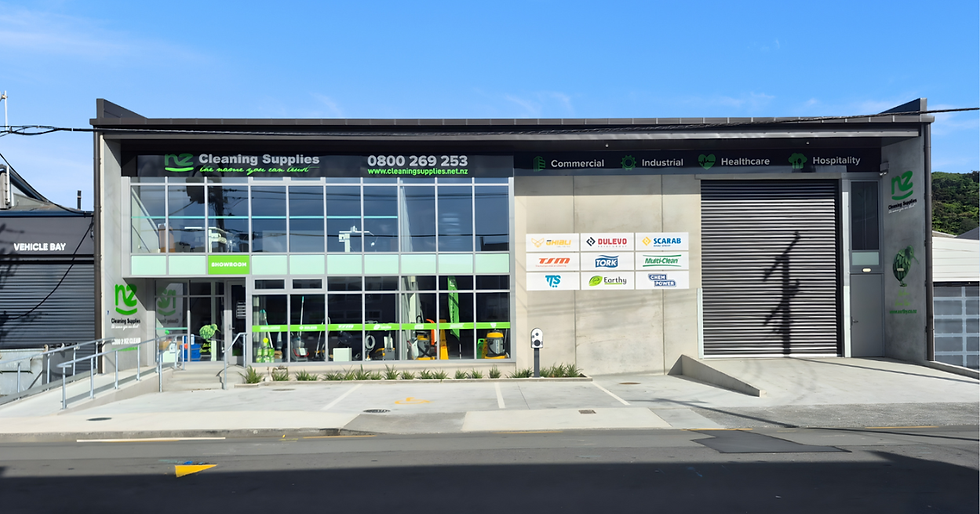Market forecast June 2024: The outlook for New Zealand’s commercial real estate in the next 1-2 Years.
- Kevin Dee

- Jun 27, 2024
- 4 min read
Updated: Jul 25, 2024
Key trends and insights

The consensus is that interest rates have plateaued, with any movement up or down is
likely to be minimal. This alone won’t impact property yields significantly. However, we
must be mindful that if wholesale interest rates rise in response to the United States
and other major economies not winning the war on inflation, then we can expect our
interest rates to rise.
Putting interest rates aside, I believe the biggest influence on the commercial property
market in the next 1 to 2 years will be the performance of the economy.
Unemployment is rising, and consumer spending and business confidence are falling.
The profitability of most businesses is being and will continue to be affected. We will
see more business closures, failures and consolidations. This will lead to a rise in
vacancies, resulting in some cases a fall in rentals and, with that, a fall in values.
Industrial
I am seeing it now - vacancy rates are increasing, and buildings are staying vacant longer.
Companies are reassessing their footprint, deciding if they need such large buildings. With supply chains now more or less back to normal, businesses are reducing stock levels and requiring less space. Some are closing branches.
National and international companies, especially listed ones where earnings are closely monitored, are leading the way. If they can’t increase turnover, reducing costs is the only option to preserve profits.
Examples include NZ Safety - Blackwoods (part of Wesfarmers, a publicly listed Australian conglomerate) recently closing their 2,500 square metre warehouse in Gracefield and servicing Wellington from their Auckland and Christchurch warehouses. Veridian Glass has also downsized from a 4,000 square metre warehouse in Gracefield to a 700 square metre depot in Alicetown.
Some business owners will sell some or all of their real estate holdings, including through leasebacks, to put capital back into their business so they can weather the storm.
Don't worry, it's not all doom and gloom. Some tenants whose businesses have not been affected by the economic downturn will see the increase in vacancies and more options available as a good time to buy their own building. Looking long-term, they will buy a building larger than their immediate needs.
An example of this is TSB Living, which recently bought a 5,000 square metre warehouse in Wingate, at least double the size of the building they leased in Gracefield.
Retail
The number of strip shops for lease will continue to increase until the employment rate falls and retail spending increases. Rents and values will fall further.
For example, a shop on Lambton Quay I leased back in 2017 is now back on the market with an asking rent only 10% higher than I achieved in 2017. Retailers are doing it tough, and with that, so are their landlords.
The exception is the mega centres, which are holding up well and I expect will continue to do so. Despite the occasional failure, like Godfreys, there seems to be, and I expect there will continue to be, good demand for space in the mega centres.
CBD Office
Most occupiers are trying hard to get staff back in the office, so the impact of working from home will diminish over time. However, we all know what’s happening to staff numbers in the state own enterprises (SOE’s), and the flow-on effect to companies that provide consultancy and backup services to them.
Many of these entities have long-term leases, which may minimise the impact on a property's income. However, offloading surplus space by subleasing will increase vacancies, leading to a fall in rentals and values. Yes, even building owners with SOEs on long-term leases will experience a short-term drop in value as buyers seek higher yields with the expectation of little or no rental growth in the short to medium term.
Owners of B and C grade office buildings may consider repurposing them into short-stay or residential accommodation. This may not be simple, as the floorplate configuration, location, and building's position relative to neighbouring properties might not allow it. Additionally, for a partly leased building, the biggest hurdle is often obtaining vacant possession.
This aside, the biggest hurdle for a partly leased building is often obtaining vacant possession.
The Good News
Properties leased long-term with a full ratchet clause will have their income protected from rising vacancies and falling rents.
Replacement costs will continue to exceed current market values and development activity will slow, resulting in little or no new space coming onto the market.
The market will return to equilibrium.
In my experience, it will all return to normality. All you have to do is hang in there.
I recently sold a property for a couple who purchased it in 2000. The sale price represented a compounded annual increase in value of 9%. They received rent over the 24 years. During that time, the property market went through downturns, including the GFC. At the end of the day, it was a very good investment.
I’ve learned that growth comes from owning long-term, riding out market falls, and never being forced to sell.
And More Good News
With the high insurance premiums now being charged, competition will return as new players enter the market who may not have previously done business in Wellington.
As you would expect, they will be selective about the buildings and locations they are willing to insure. This will lead to increased competition, making the current insurers, who monopolise the market, accountable for their price increases and at real risk of losing business.
.png)



Comments